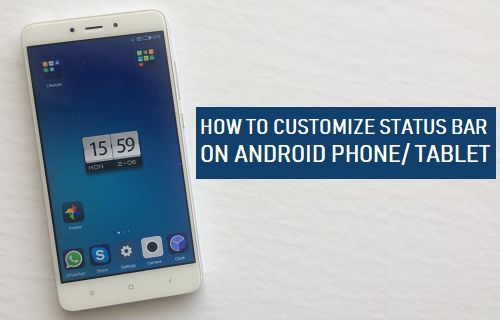
If you root your phone even more apps and options will become available to you. Clean Status Bar only shows the Wi-Fi, 3G, and clock icons for screenshots. There is also an app you can use to achieve a clean Status bar on any version of Android. You can add, rearrange, or delete quick settings, or enable or disable status bar icons.īelow these entries is an option to show a numerical representation of your battery life and Demo Mode, which declutters your Status bar by only showing a full network, Wi-Fi, and battery icon and the time. There is both a Quick-Settings entry and one labeled Status bar. Therefore, you will need to return to Settings to find the new option at the bottom of the list. You should receive a congratulatory pop-up, advising you that UI Tuner has been added to Settings. From Quick Settings, long-press the Settings button (looks like a tiny gear) until it starts spinning. If you have a phone with Marshmallow 6.0, you can access a top secret hidden menu with a System UI Tuner that will afford you many more options. There are plenty of ways to master your Android Notification bar.Ģ. Then use a file manager (such as Astro File Manager or ES File Explorer) to move the MP3 to the Notifications folder (typically under /Storage/Sdcard0) and go to Settings > Sound > Notifications to set your new MP3.Īlso, if you would like a function history of all of your notifications and the ability to pin them, try Notif Log Notification History. If it’s a custom notification tone that you desire, you first need to ensure that you have the necessary MP3 music file on your phone. You can also specify whether you still want notifications from certain contacts, or from everyone. If you want to schedule some temporary Do Not Disturb time, you can set the date and time by going to Settings > Sound & Notification > Interruptions. All means you will be receiving every notification and Priority lets you be more selective. If you select None, all audio notifications will be turned off, including alarms. For instance, when you press the Volume button (up or down-it doesn’t matter), you can choose from All, None, or Priority.

Lollipop’s notification system was actually quite novel when it came out, and even if you aren’t running a new OS, you still might not be aware of all it is capable of. You can have far more control over the top of your display than ever before. Whether you are still using Lollipop, as many of us still are, you can create more options for yourself either through existing settings or by installing apps.

Android 7.0 Nougat offers built-in customization of the quick settings bar, but actually, so does Marshmallow 6.0, however, the way you can get to the menu borders on secrecy.


 0 kommentar(er)
0 kommentar(er)
